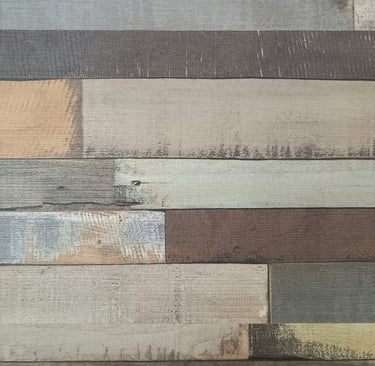Textures and Patterns in Décor: How to Use Them with Balance and Style
Mixing textures and patterns in interior design is a fantastic way to bring more personality and charm to any space. But if done without a plan, it can result in cluttered and confusing environments. The good news is: with a few simple tips, you can use these design tools with balance and style. Let’s get into it?
8/13/20253 min read


Why Combining Textures and Patterns Makes a Difference
Creates Depth and Visual Interest
Textures and patterns act like visual layers. They create contrast and movement, guiding the eye around the space and revealing details. A plain sofa comes to life with patterned cushions. A neutral wall can pop with textured wallpaper.
Adds Comfort and a Sensory Touch
Texture brings tactile sensations: the coziness of linen, the softness of velvet, the raw feel of natural wood. Mixing textures balances these sensations and makes your space more inviting.
Expresses Personality in the Space
Colors and patterns reflect your personality. A floral print brings lightness and romance, while industrial textures speak to a modern, bold vibe. When used in balance, these elements express your style without overwhelming the space.
How to Use Textures with Balance
What Are Textures and How Do They Impact Décor?
Texture refers to the surface feel or visual appearance of materials: leather, wood, cotton, concrete, wicker... Mixing different types adds dimension and a touch of sophistication.
Blending Materials: Wood, Linen, Velvet, Metals, and Natural Fibers
Don’t be afraid to mix materials! A velvet sofa can look stunning next to a wicker chair and a metal side table. The key is visual harmony and a cohesive color palette.
The Rule of Contrast and Repetition
If you use a rougher texture like exposed brick, repeat that rustic feel in small touches (like clay pots or iron lamps). This builds consistency. Then contrast with something softer or more refined (like a fluffy rug or a satin cushion) to keep things dynamic.
How to Use Patterns Without Overdoing It
Choose One Dominant Pattern
Pick one print to be the star of the room—on a rug, wallpaper, or curtains. From that choice, you can coordinate other design elements.
Add Secondary or Neutral Patterns
Yes, you can mix patterns! Just make sure they “talk” to each other. A floral print can work beautifully with stripes. The trick? Keep the color scheme consistent.
Balance with Color and Proportion
Large prints work better in spacious rooms or statement pieces. In smaller areas, go for subtle or delicate patterns. And always balance with solid-colored elements to avoid a chaotic look.
Practical Tips for Mixing Textures and Patterns
Start with a Defined Color Palette
Choose 2 or 3 main colors to guide your choices. This helps create harmony across textures and prints.
Use Patterns in Small Items
If you're new to patterns, start small: cushions, throws, or framed prints. These are easy to swap out if you feel like refreshing the look.
Alternate with Solid Elements
A fail-safe trick: for every bold texture or pattern, place a plain element next to it. This helps the eye rest and keeps the look clean.
The 60-30-10 Rule
This classic interior design formula keeps your space balanced:
60% of the room in a neutral base
30% in a complementary color or texture
10% in a pop of pattern or bold material
Common Mistakes When Mixing Textures and Patterns (And How to Avoid Them)
Overloading with Too Many Patterns
Using too many unrelated patterns can create visual noise. Limit yourself to two or three that share a common feature (color, style, or theme).
Poor Color Coordination
Even if you're mixing lots of textures and patterns, staying within a defined color palette keeps everything cohesive.
Clashing Textures in One Space
Mixing shiny with rustic can work—or not. If you want to be bold, balance opposites with neutral elements so nothing feels out of place.
Style Inspirations That Work
Boho Chic
Layer natural fabrics, ethnic prints, fluffy rugs, and wood. The mix is intentional but works beautifully when there's a unifying color or vibe.
Scandinavian
Soft textures rule here: faux fur, chunky knits, simple geometric patterns, and light woods create a cozy, minimalist look.
Urban Contemporary
Try mixing concrete finishes, leather, glass, and abstract patterns in neutral tones. The mix of raw and refined adds character.
Conclusion
Playing with textures and patterns is a creative, stylish way to elevate any space. The key is balance: choose your palette, respect proportions, and don’t be afraid to explore. When combined thoughtfully, these elements create cozy, modern, and personality-filled rooms.
📣 Now It’s Your Turn!
Liked these tips? Share this post with someone redecorating their home or collecting ideas!
© 2025 Dhomehub. All rights reserved.
